Sharing plant-based food options
Plantd makes it easier for everyone to find and share plant-based food options at all types of restaurants—from a roti at a local Indian restaurant to a donut at the coffee shop around the corner.

Overview
With reports calling for people in rich nations to cut beef and lamb consumption by 40% to feed the rapidly growing population and to prevent catastrophic climate change, it’s more important than ever to help people replace meat, eggs and dairy with plant-based options in their diet.
Currently, people cobble together a variety of sources to find plant-based options at restaurants. It takes a search across Yelp, Google Maps, Instagram, Facebook, blogs and vegan apps like HappyCow. It’s a time-consuming process to find relevant and up-to-date information about what’s available (and what’s actually good!).
As someone who hasn’t eaten meat in almost 20 years, I’m highly motivated to put in the work to find plant-based options, but for those starting to dabble, how can we except them to do the same?
"Changing how we eat will not be enough, on its own, to save the planet, but we cannot save the planet without changing how we eat." — from Jonathan Safran Foer's book We Are the Weather: Saving the Planet Begins at Breakfast.
What do I mean by “plant-based”? Plant-based foods are ones derived from plants (and free of animal products). Alternatively, “vegan” could be used, but vegan refers to an entire lifestyle free of animal products, not just diet. Unfortunately, veganism still carries a stigma that turns some people off.
Goals
My sister Lauren and I hatched the idea for Plantd after trying to find a place to go for brunch with plant-based options in our neighbourhood. After much Googling, looking at Facebook groups and Instagram, we found one, but it wasn’t easy.
The goals of Plantd are to:
Role & Process
After researching and designing the first iteration of Plantd, I then faced the daunting task of actually building an app. Should I find a developer to build it? Should I attempt the front-end and find a developer to help with rest? Should I learn Swift? Should I learn React Native?
Ultimately, I took this as an opportunity to learn React Native and spent the next 9+ months bringing this to life. I’ve learned a TON about mobile development in this time, including React Native itself and integrating Firebase/Firestore, Cloud Functions, Algolia, SendGrid, and more. I’m excited to bring the knowledge and skills to future teams that I work with!
App Overview
Plantd is different than most restaurant listing apps in that it focuses on sharing dish reviews, rather than restaurant reviews. Since plant-based options can be found at all types of restaurants, we want a review of the dish itself, not just the restauarant. For example, it wouldn’t really be that helpful to have a review of A&W, when what we really care about is the Beyond Meat Burger option available there.
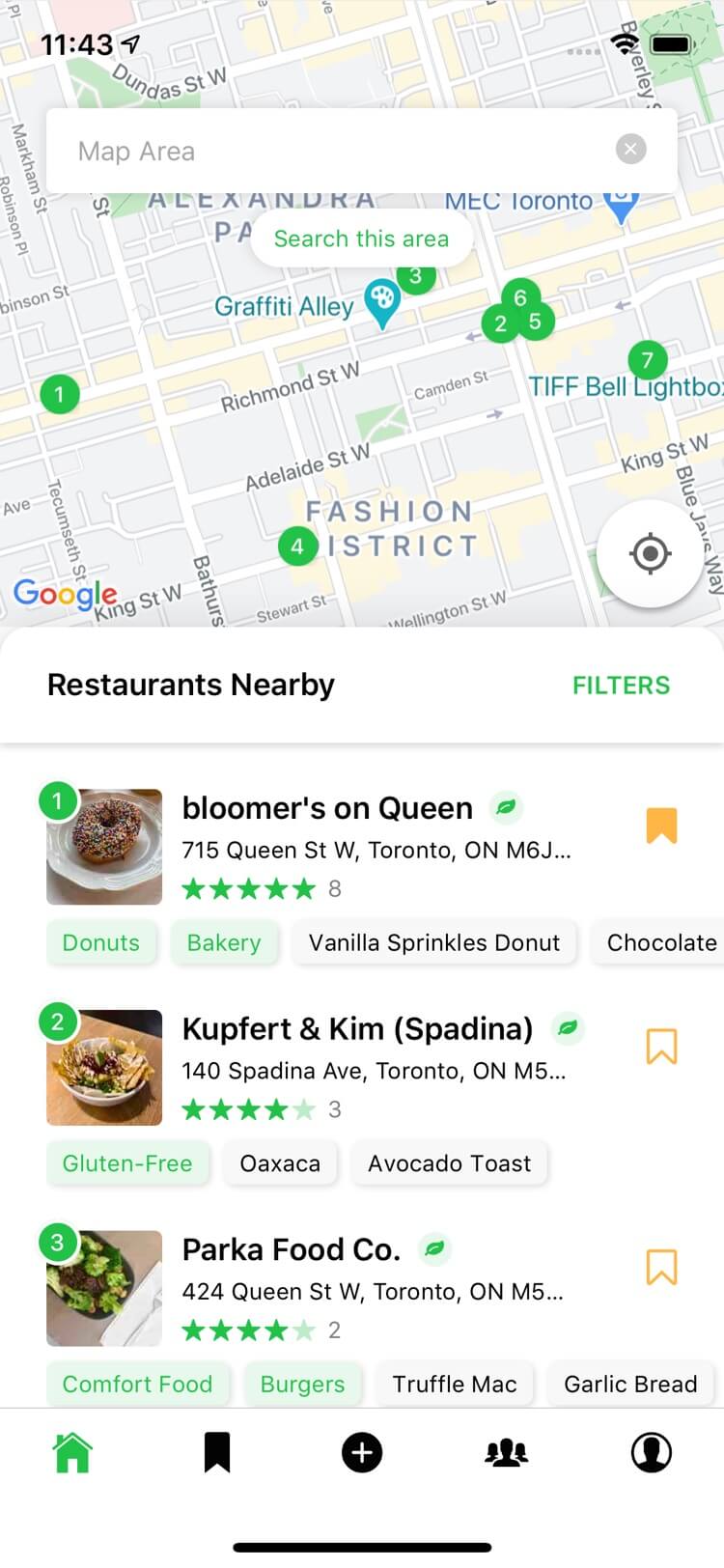
Find plant-based options that have been added nearby with the ability to search for restaurants or by category.
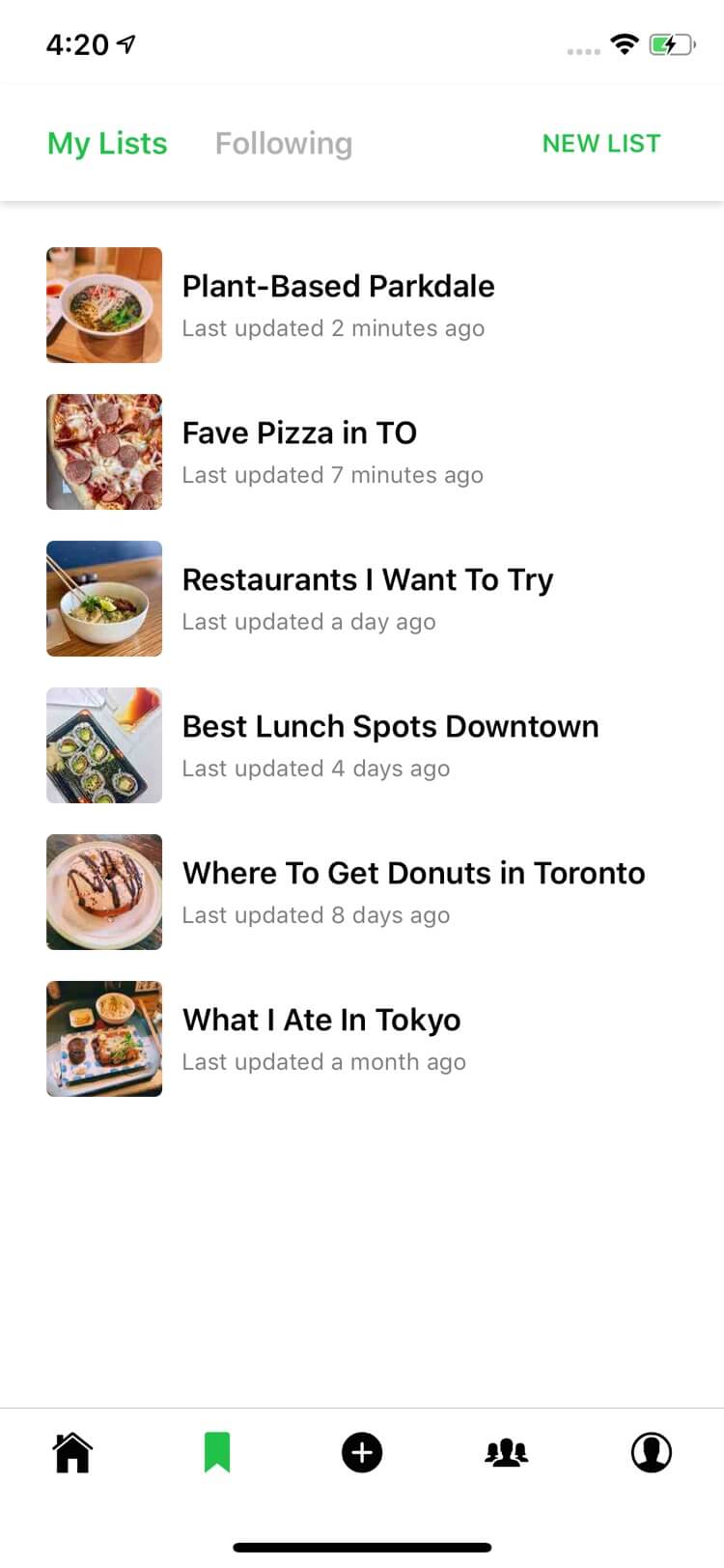
Save restaurants and dishes to lists to try later or to recommend to others.
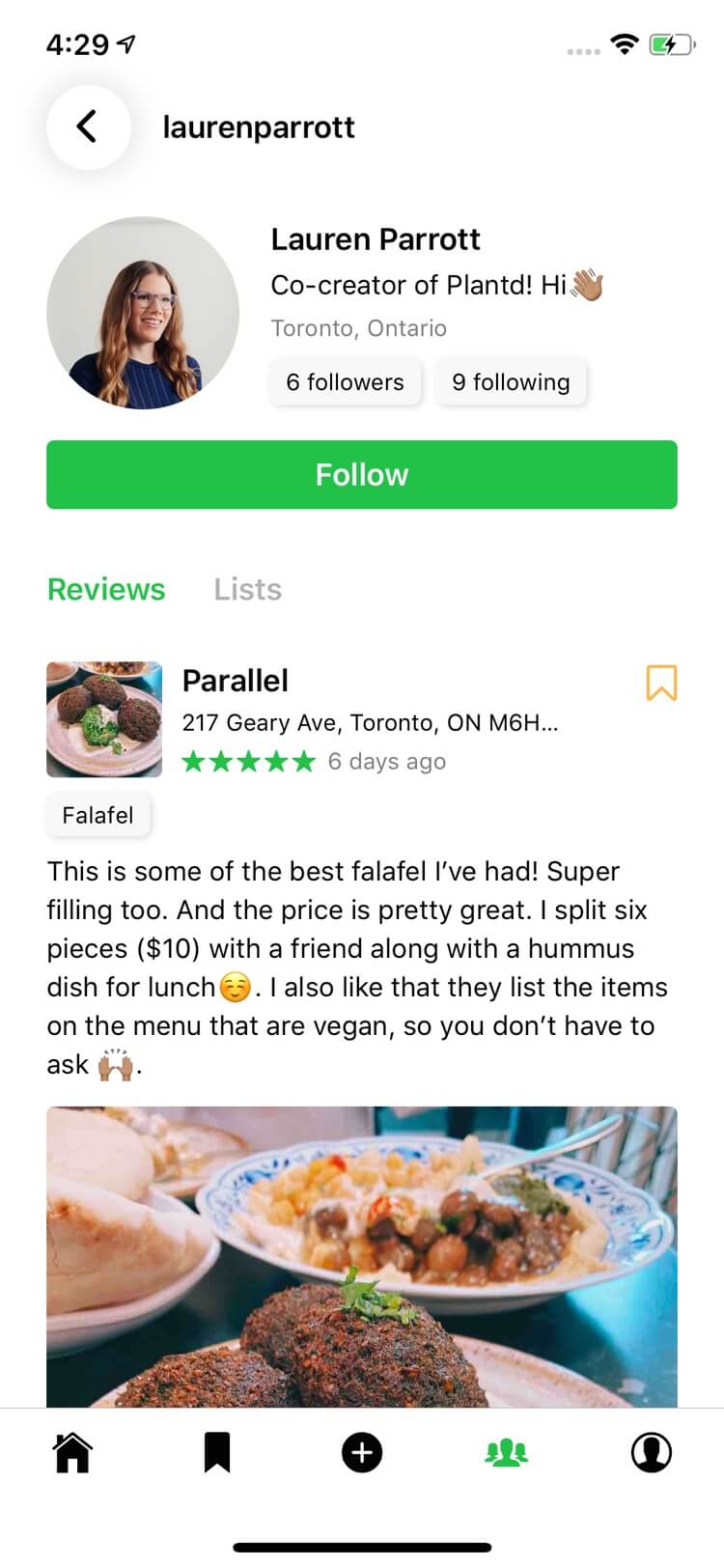
Follow friends, new and old, to see their latest reviews and recommendations.
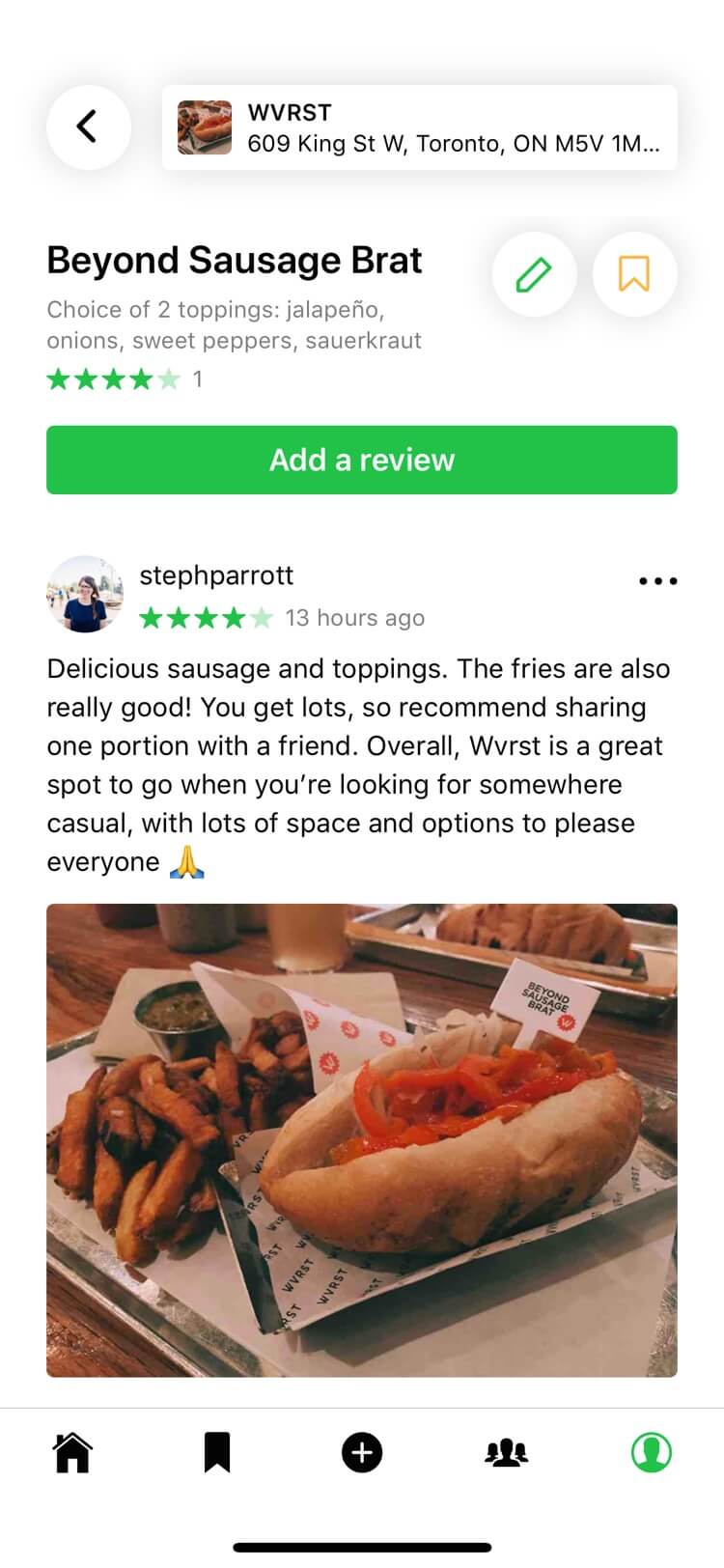
Share your own plant-based food reviews and help grow the community.
Research
Competitors
There are quite a few vegan food finding apps out there—the most well-known being Happy Cow. It started in 1999 as a website listing vegan/vegetarian restaurants and reviews and focuses on listing purely vegan and vegetarian restaurants. The branding and marketing is very much oriented towards a vegan lifestyle and has quite stringent guidelines about the types of restaurants that they’ll accept (for example, they may not accept cuisines that “do not have available dishes specifically designed for vegans”).
On the flipside, our goal for Plantd is to be as inclusive as possible. Much like what’s been said about the zero waste movement, we don’t need a handful of people doing things perfectly, we need millions of people doing it imperfectly.
User Interviews
Throughout design and development, I interviewed and tested out the app over bloomer’s donuts (the best) with a range of people, including vegans, vegetarians and flexitarians—anyone interested in eating more plant-based foods.
In the beginning, I wanted to understand peoples’ current behaviours around finding plant-based options and gauge whether Plantd would be an app that people would find useful and be motivated to contribute to.
I found that while some prioritize going to 100% plant-based restaurants, others prefer restaurants with both meat and plant-based options that they can visit with their friends—they don’t want to disrupt their social lives. This underscored our decision not to be restrictive or prioritze 100% plant-based restaurants over “regular” ones.
Testing working builds of the app also highlighted a number of features and functionality that are pretty unique for this audience. For example, since users can add dishes that aren’t plant-based off the menu, but can easily be modified to be plant-based (ie asking for no mayo on a veggie burger), one user pointed out that not having those items marked could lead to accidentally ordering something that isn’t plant-based. This was great feedback and led to the changes below 👇🏽
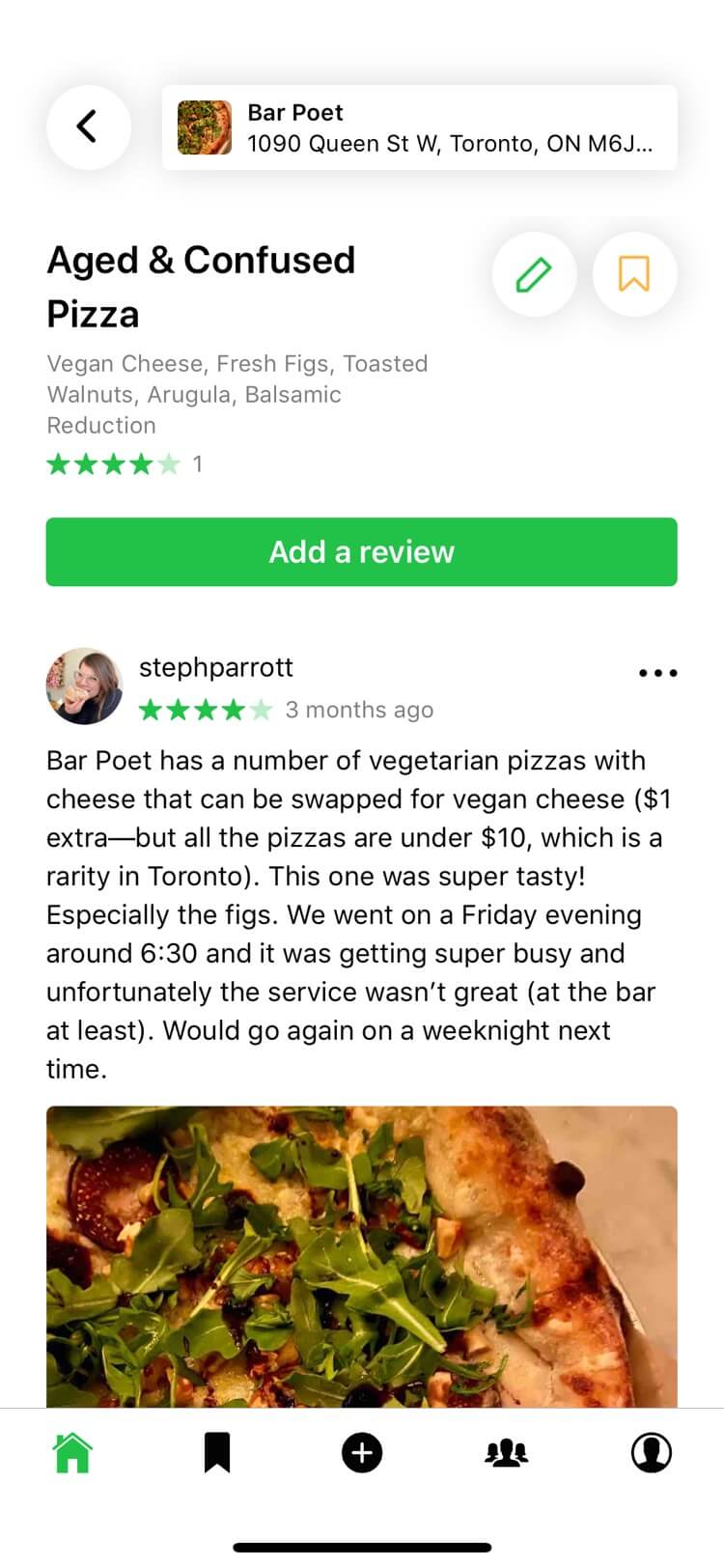
Previously, without any indication that the dish had been modified, the user wouldn't know that the item needs to have the regular cheese swapped for a vegan cheese option. This could lead to ordering incorrectly!
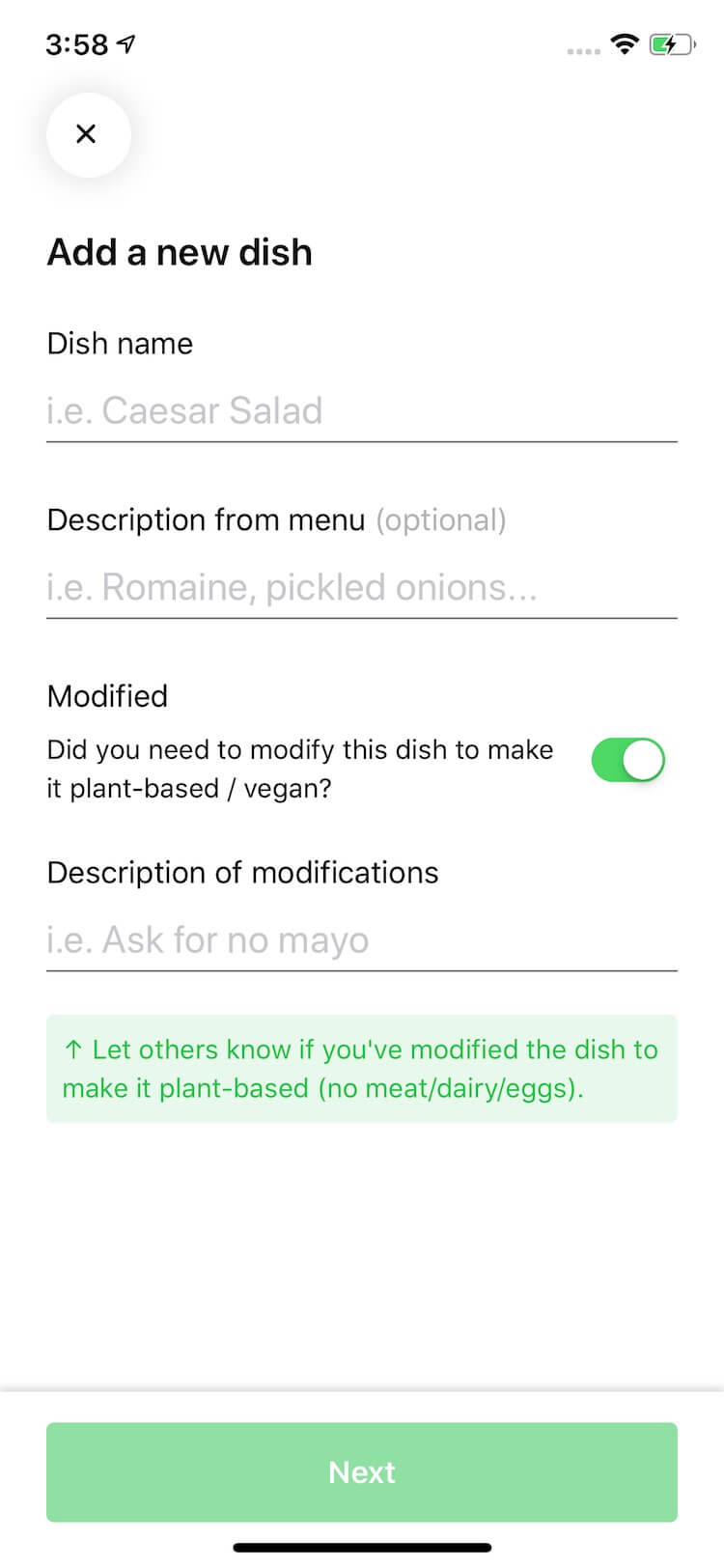
Now, when adding a new dish (this step is only necessary for new dishes being added), the user can specify whether they've had to modify the dish to make it plant-based and a description of what has modified (ie, "Ask for vegan cheese option").
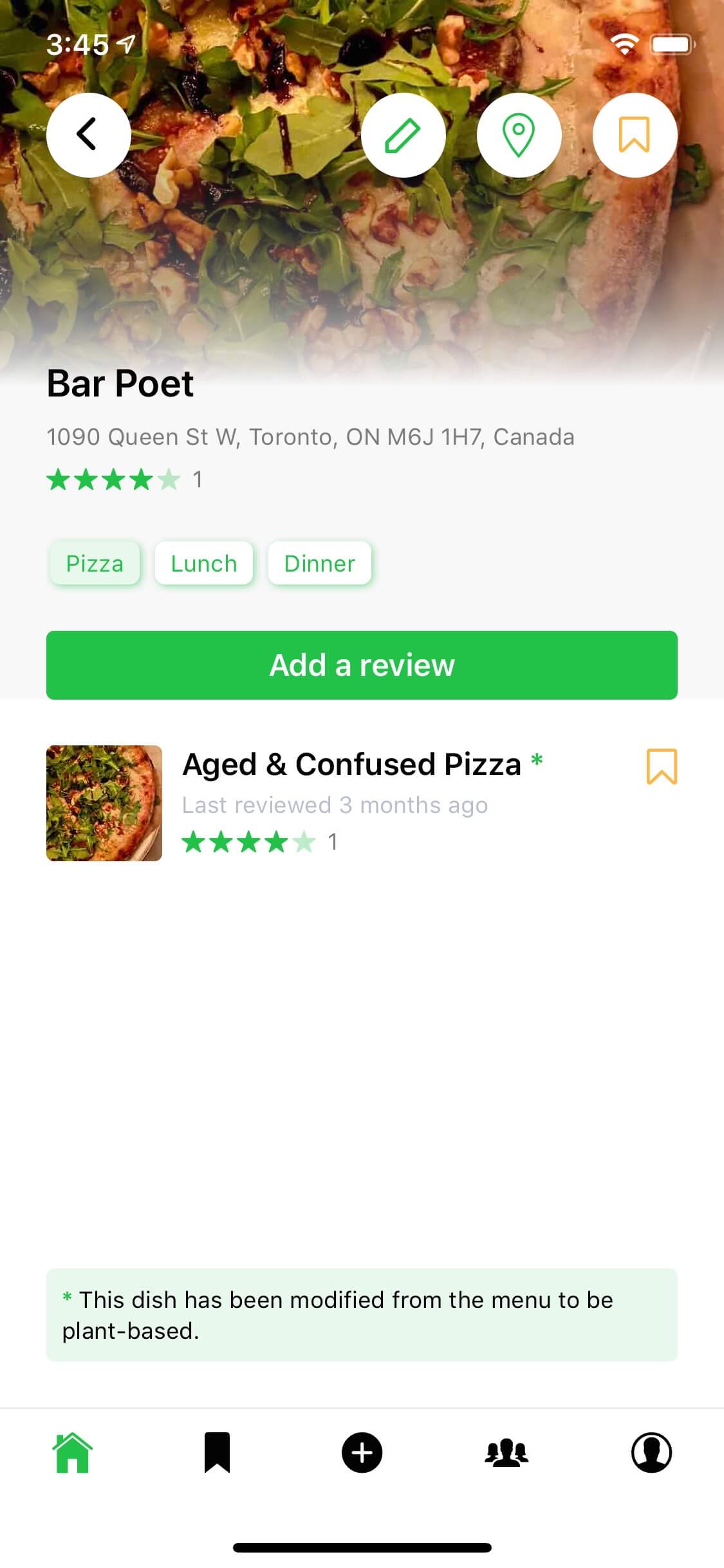
When viewing the restaurant's details, users will see which dishes are marked as modified, so that they know to modify it before ordering.
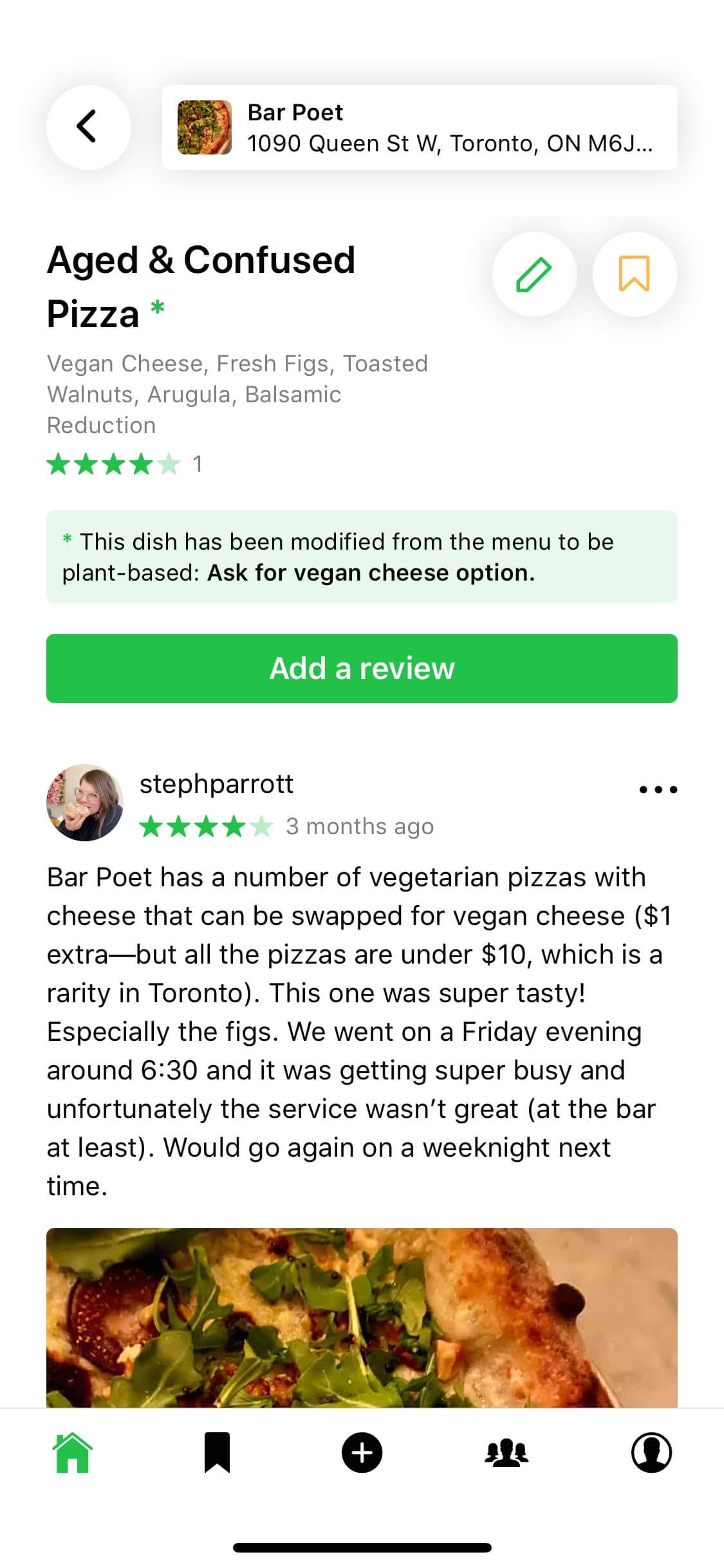
When digging into the details of the dish, users can see what specifically needs to be modified, so they don't need to comb through reviews.
Adding a Dish Review
One of the most important flows for the app is adding a dish review. Users’ reviews are core to the success of the app, so this process had to be especially quick and seamless. I’ll continue to iterate on this throughout the beta process as people use it on-the-go with their real-world reviews.
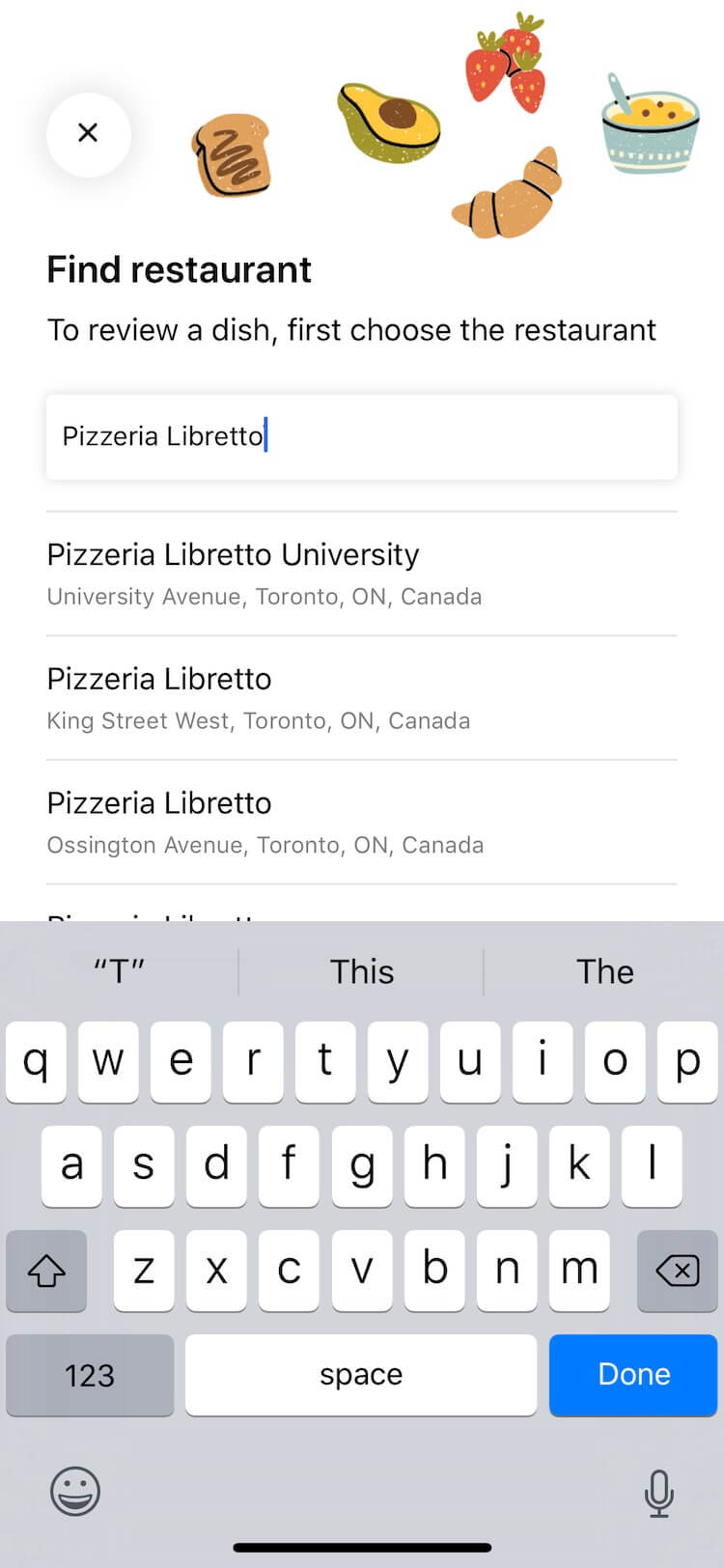
Find restaurant: users can search for the restaurant, which uses the Google Places API so that they don't need to enter the basic information for the restaurant.
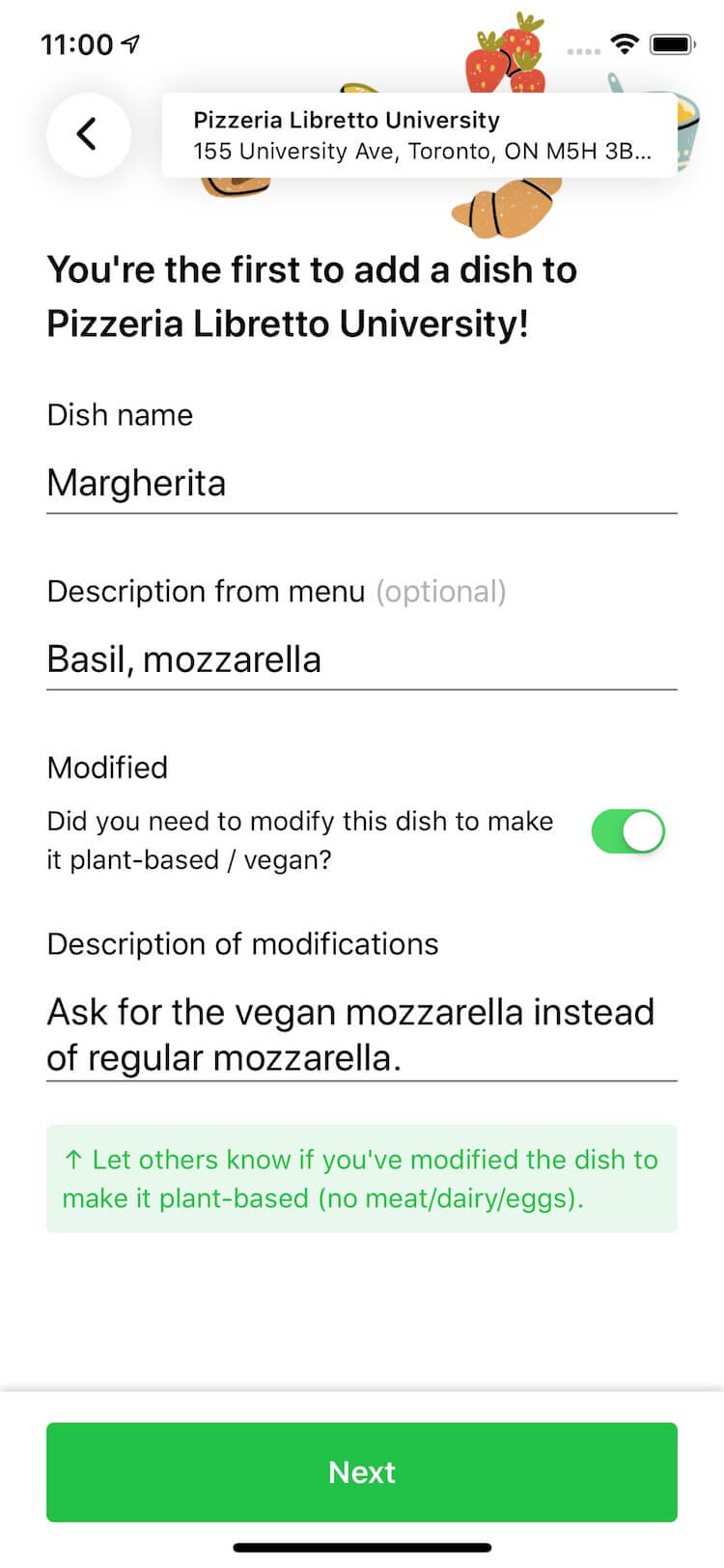
Add a dish: the first user to add a dish supplies the dish name, description and describes any modifications that need to be made.
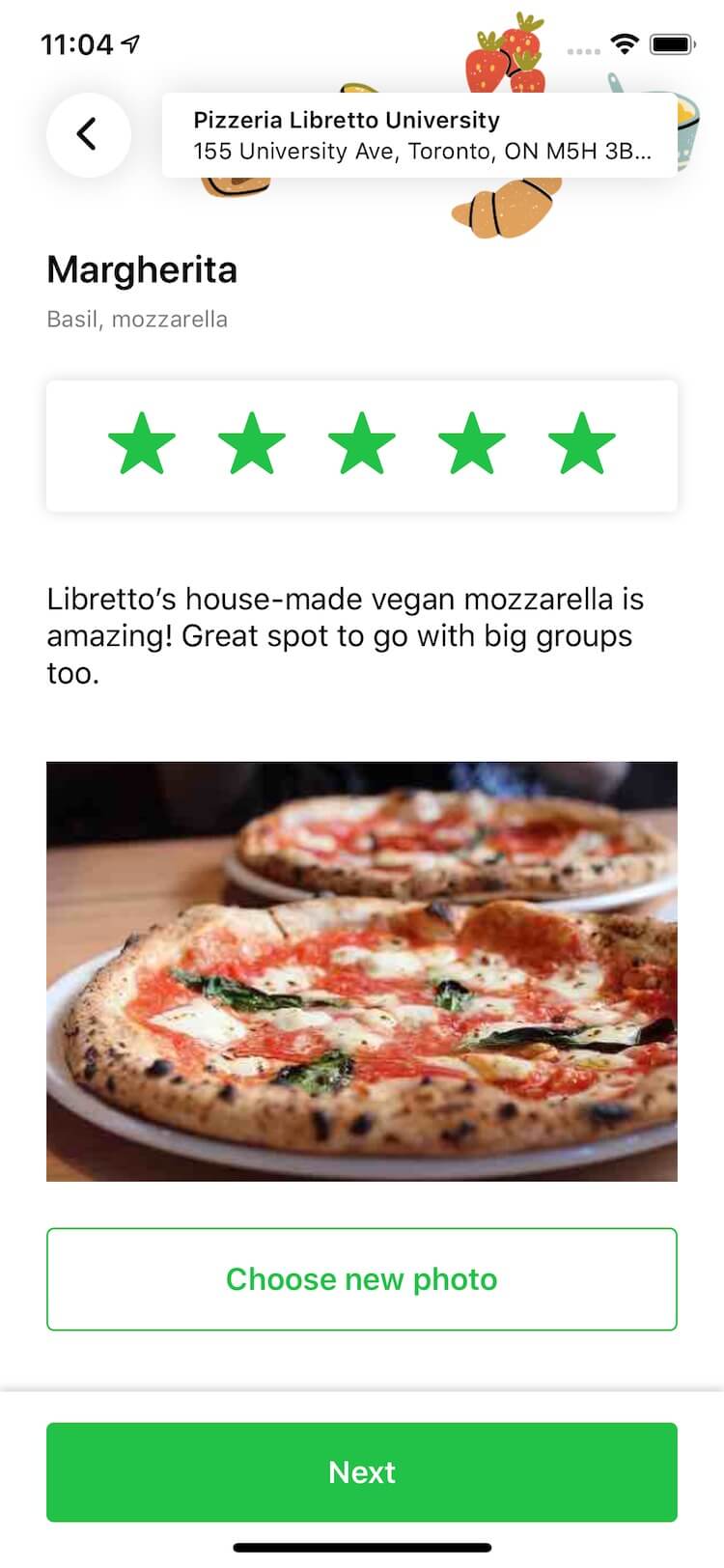
Write a review: users add their rating, description and a photo to share with others.
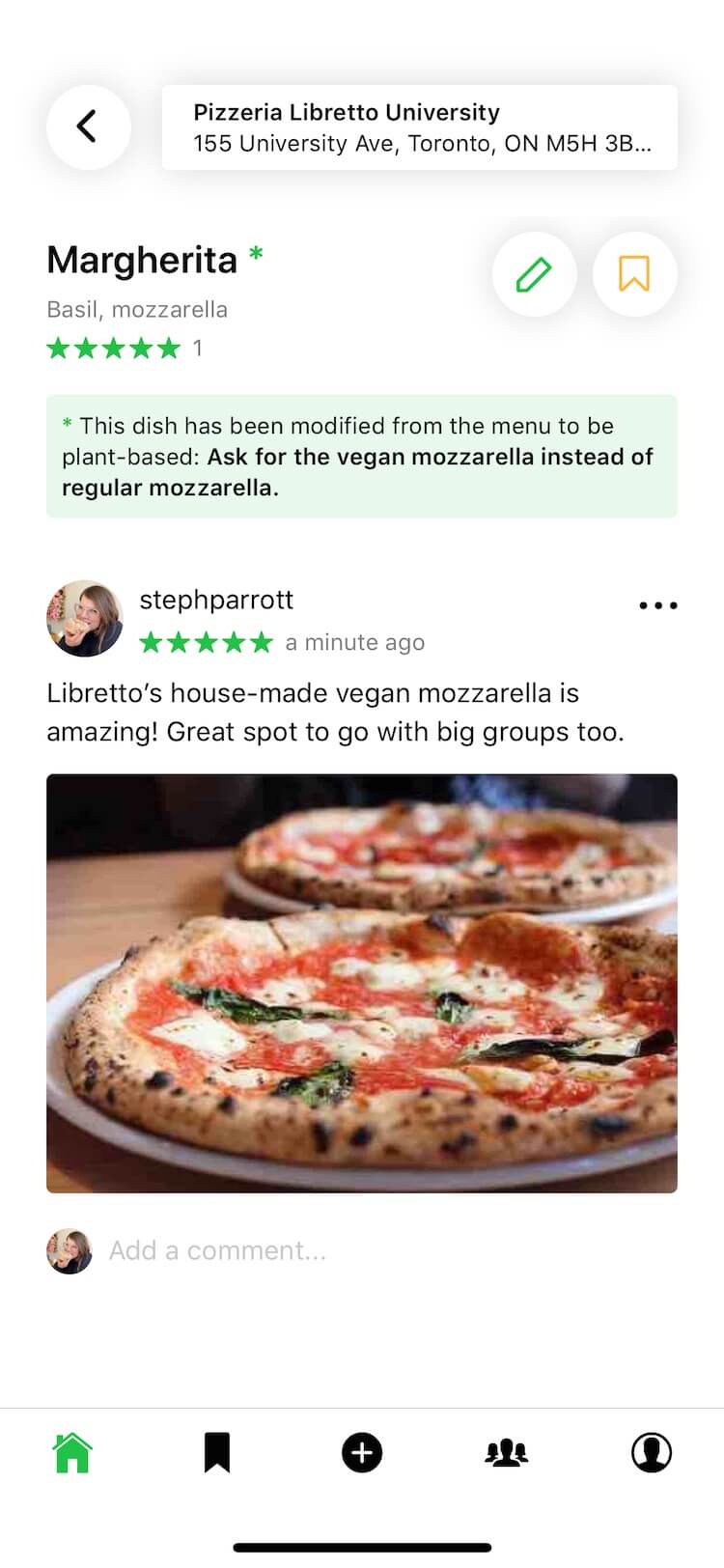
Shared: the review is now available for others to discover.
From Design to Development
Previous to Plantd, I’d only ever built pretty basic websites with HTML/CSS and minimal Javascript, so it was a pretty steep learning curve to work with something like React Native, as well as APIs and a database. Design+Code’s React Native for Designers was a really helpful starting point to build off of.
Once I got the front-end (the UI and navigation) in place with static data, next came the daunting task of setting up the backend with Firestore, Google’s NoSQL databse, to store, sync and query actual data. I hadn’t a clue how this really worked, but piece by piece, tutorial by tutorial, I got things working.
Eventually I stopped designing in Sketch and just created new screens directly in code using components I’d already built.
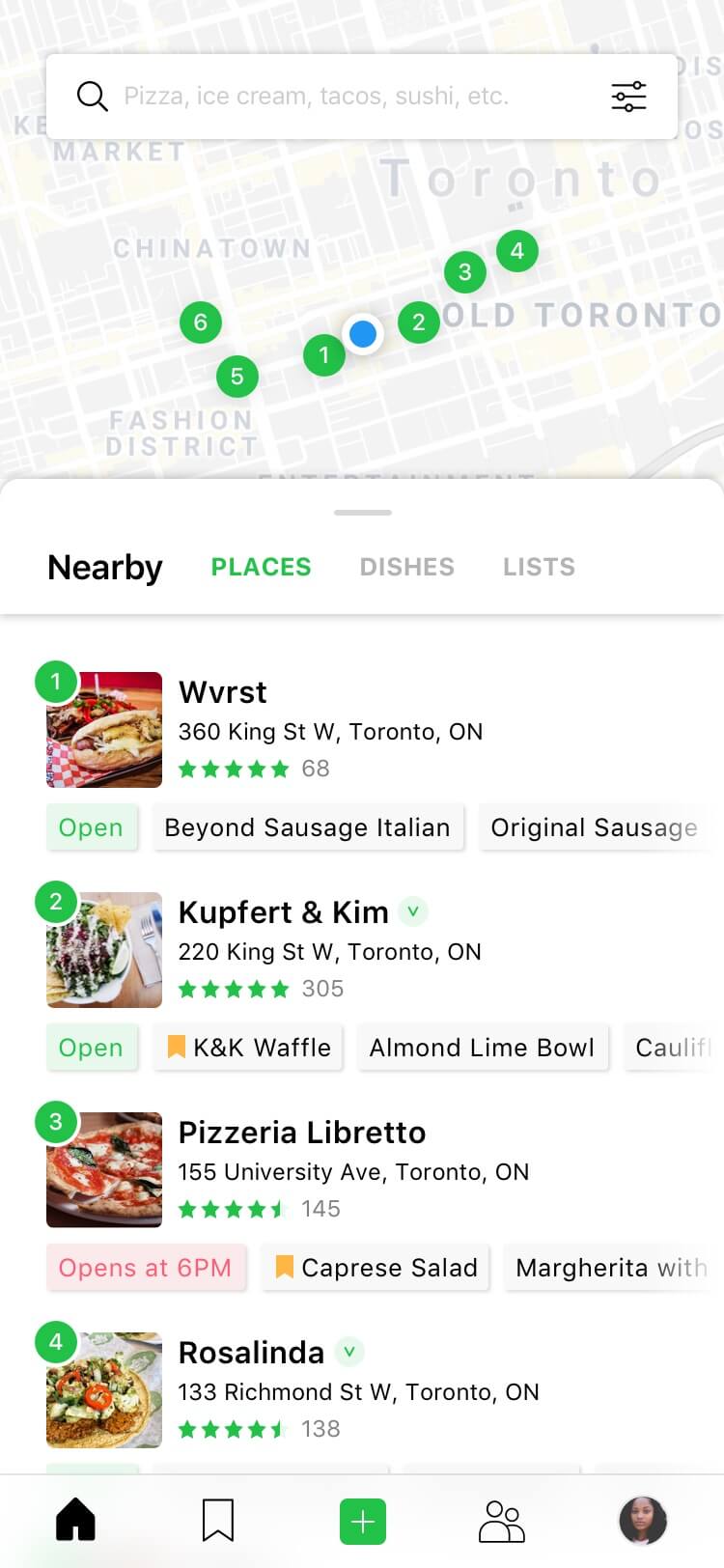
Mock-up: Much to my surprise, not much changed from the designs to the live app.
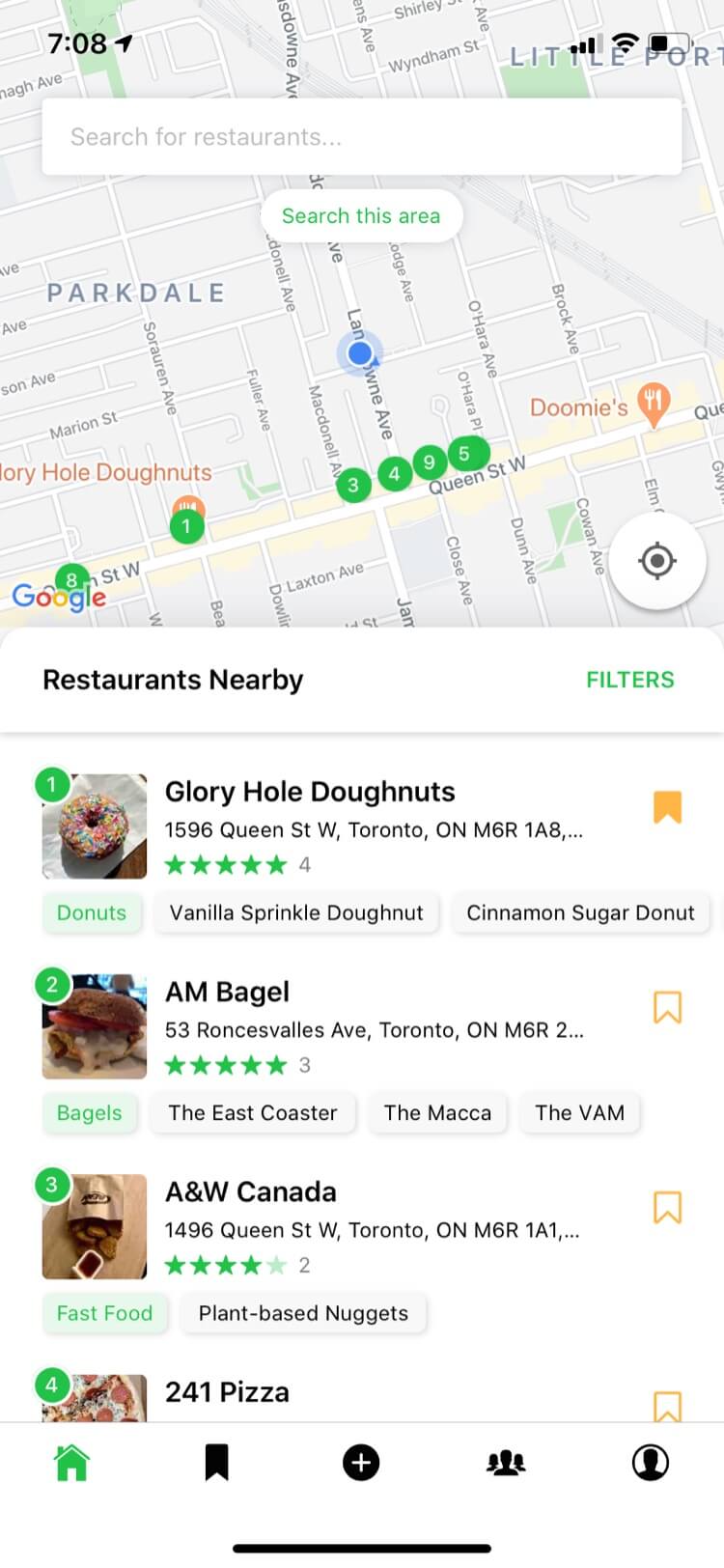
Live app: As I started to integrate real data however, I realized that some data wouldn't be feasible. For example, the Places API would've required an extra API call (which costs more $) to check whether the restaurant is currently open according to that user's timezone. I decided to remove this and replace with the category information.
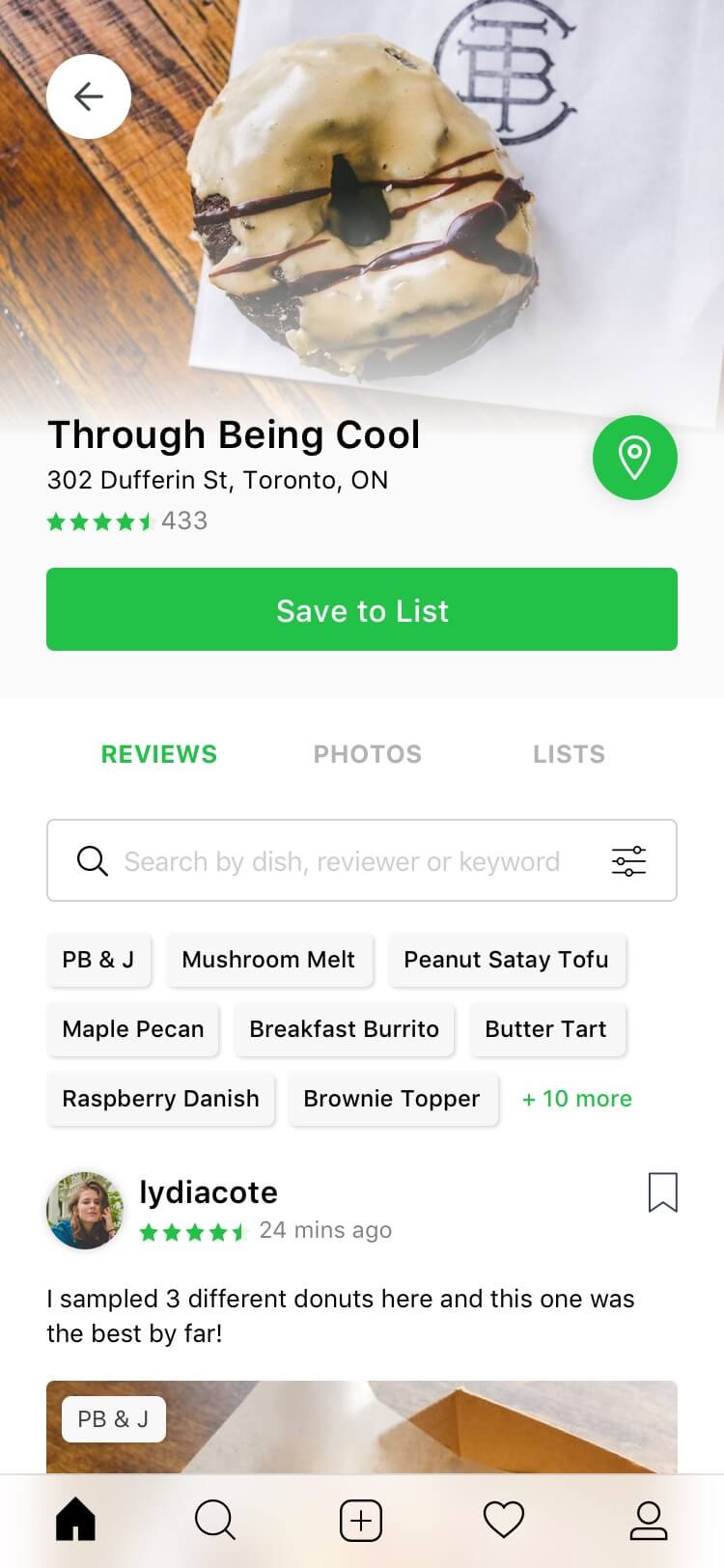
Mock-up: In this early version of the restaurant screen, user testers were confused by the dish tags (ie Maple Pecan) and found this layout hard to scan.
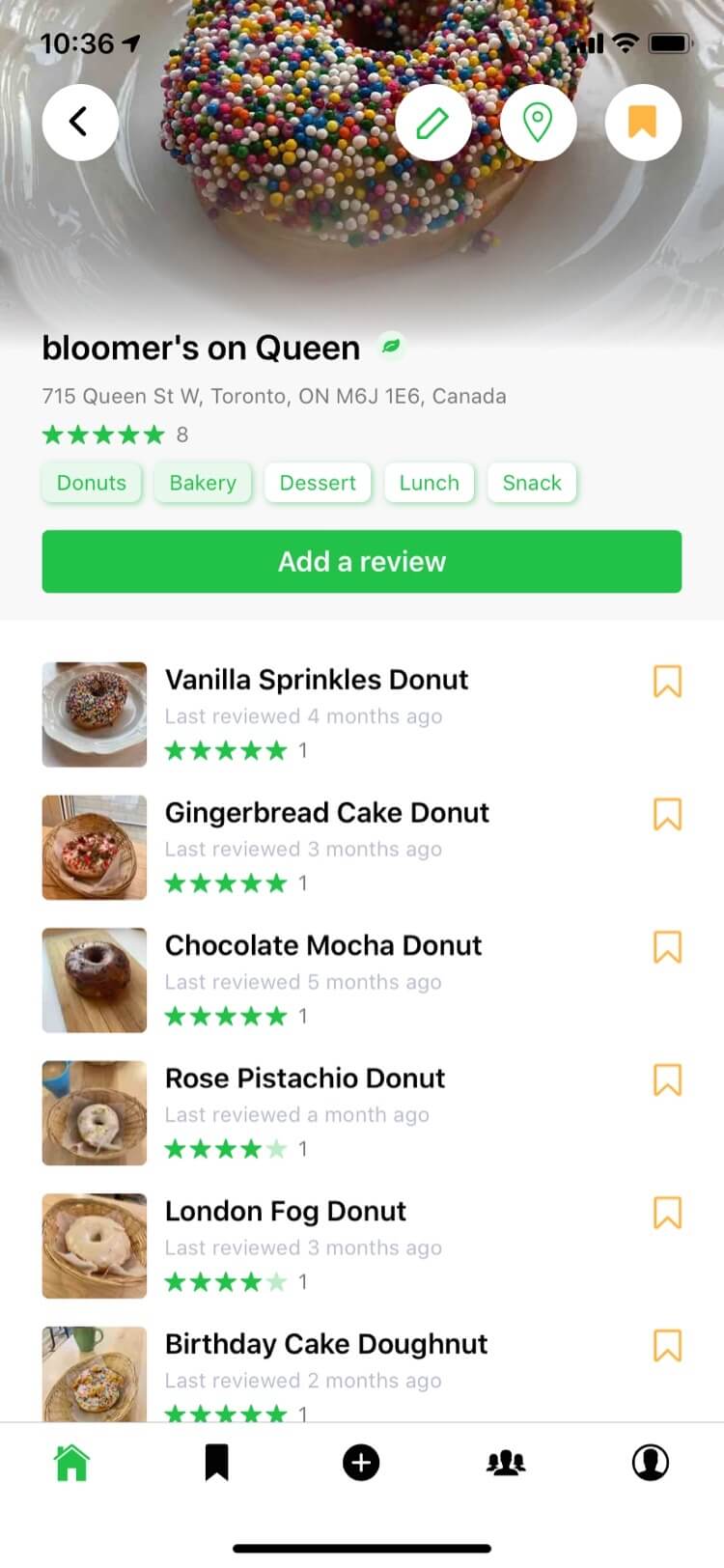
After: I redesigned this screen to focus on the list of dishes, with a thumbnail preview of the latest review, when the last review was added and the total rating and reviews to give a sense of popularity.
What’s Next?
Lauren and I launched the beta for Plantd in early March, though our efforts are largely on pause given the COVID19 epidemic. I’ll continue to fix bugs and improve the app but we look forward to ramping up again in (hopefully!) a few months’ time and supporting our local restaurants. Our next steps will be:
In the meantime, feel free to sign up for beta access!
